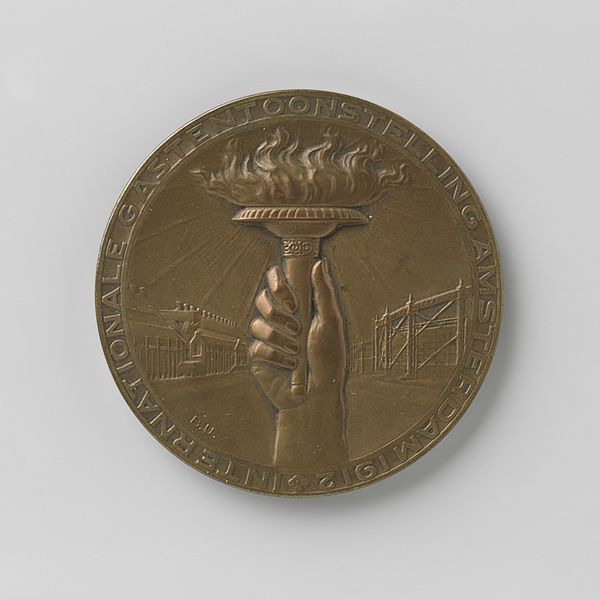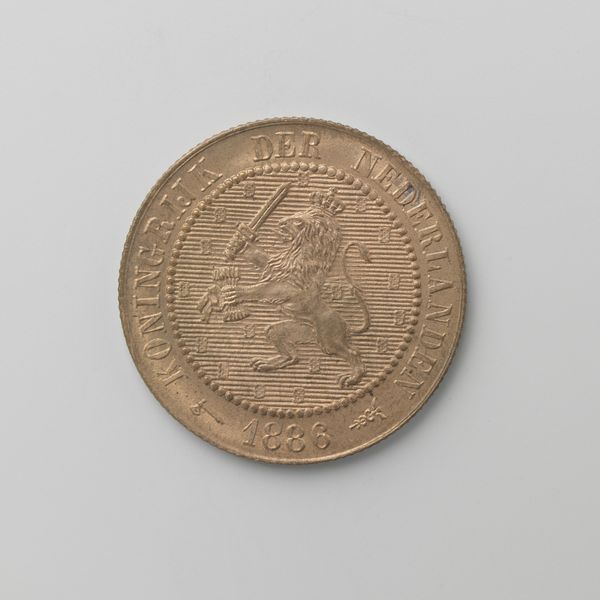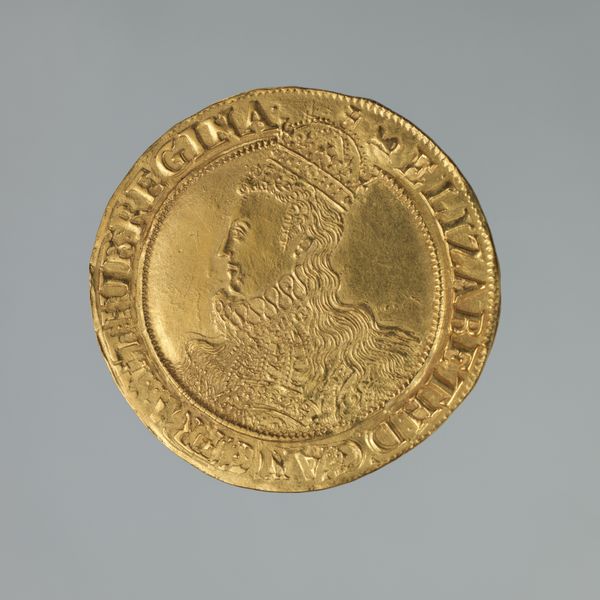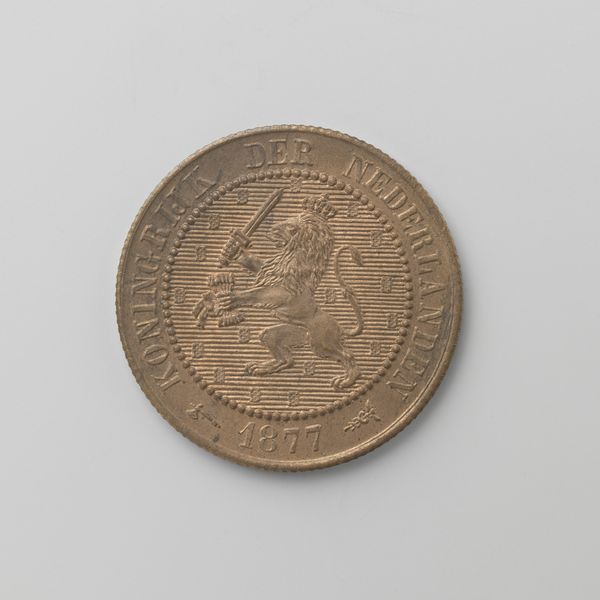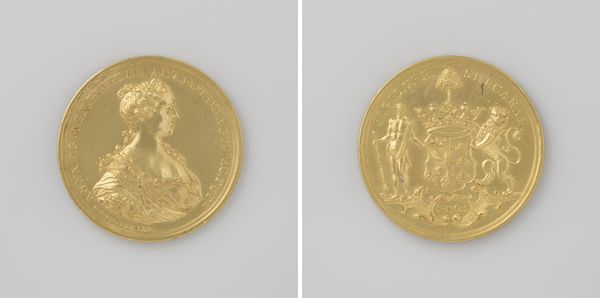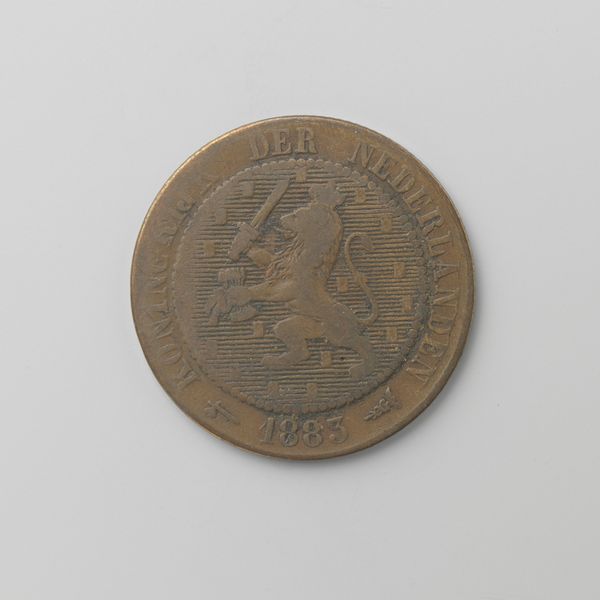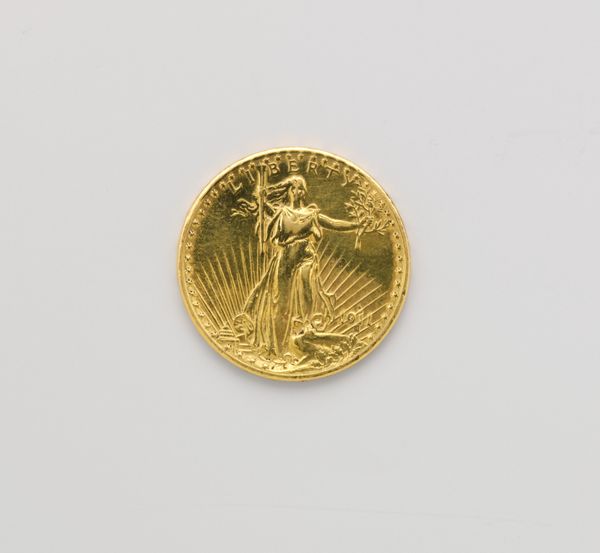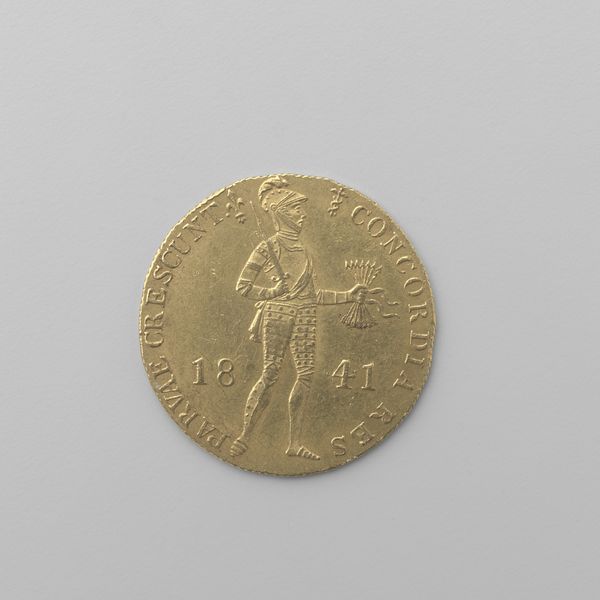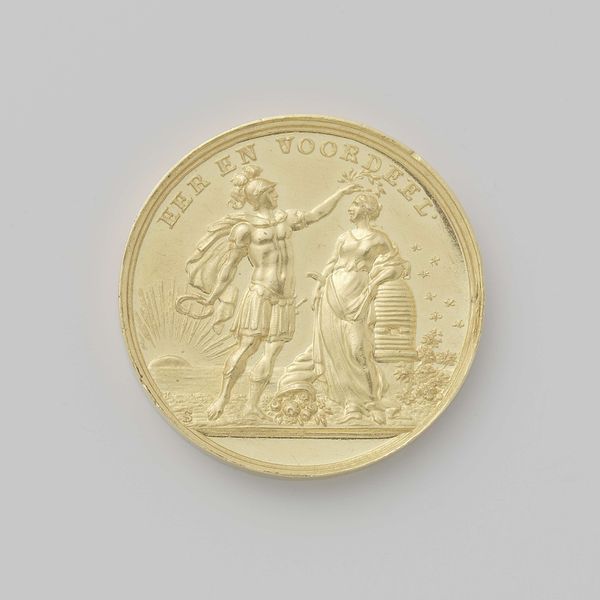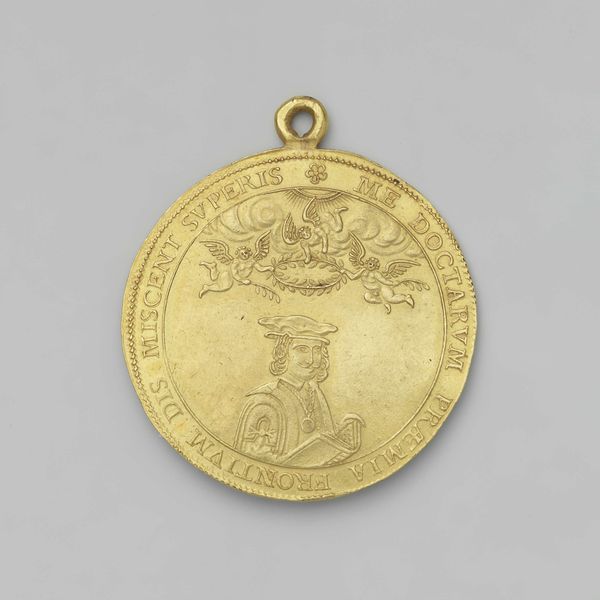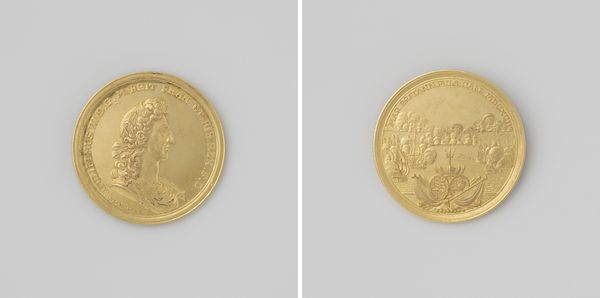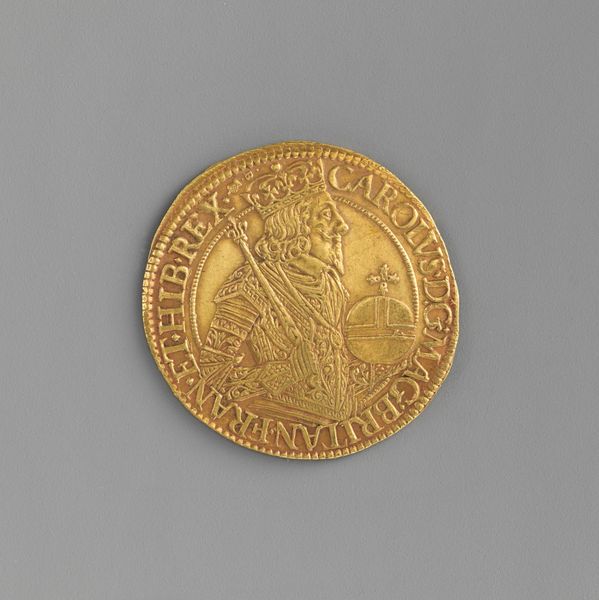
Honorary Medal Awarded to C.J. van Aalst, Chairman of the Netherlands Overseas Trust Company, upon its Discontinuation 1919
0:00
0:00
johannescorneliswienecke
Rijksmuseum
print, metal, relief, sculpture
#
portrait
#
narrative-art
# print
#
metal
#
relief
#
sculpture
#
symbolism
Dimensions: diameter 6.5 cm, weight 145.8 gr
Copyright: Rijks Museum: Open Domain
Curator: Here in the Rijksmuseum we have Johannes Cornelis Wienecke’s 1919 piece, “Honorary Medal Awarded to C.J. van Aalst, Chairman of the Netherlands Overseas Trust Company, upon its Discontinuation.” Editor: Wow, it’s smaller than I expected, but packs quite a visual punch. The golden relief is intense – like looking at a concentrated snapshot of some historical maritime drama. Curator: Absolutely. Made of metal, this piece isn’t just commemorative; it's a statement on labor, trade, and the political machinations surrounding the Netherlands Overseas Trust during World War I. The material itself signifies value, power, and the enduring nature of the events it represents. Editor: It’s interesting how the symbolism plays out, especially considering the sociopolitical tensions of the time. The cannons juxtaposed with the ship suggest a neutral nation navigating a world at war. And who exactly was C.J. van Aalst in relation to global wartime trade dynamics? Was this award genuinely honorary, or was there a degree of forced reverence? Curator: Van Aalst was quite the figure; head of NOT, an entity designed to allow the Netherlands to continue trading without taking sides, really managing the flow of goods in and out, mediating a complex landscape of warring nations all needing access to vital supplies. Look closely at the relief’s fine detailing; notice how the composition places the ship centrally, almost defensively, between those cannons and the implied threats beyond. Editor: Right, there's this definite tension radiating outward – as if the metal itself is reflecting the pressures felt by those managing the trust. You get the sense that neutrality required its own sort of violent maneuvering – economic strong-arming. I wonder about the hands that crafted this piece, the working conditions and social dynamics inherent in producing this object of “honor”. Curator: The very process of striking such a medal tells its own story about industrial techniques, about the cultural value placed on commemorative objects. This wasn't mass-produced flotsam, but a carefully made representation, embedded with intention. Editor: It prompts such deep dives into uncomfortable moral and economic quandaries inherent in wartime neutrality, how policy dances a dangerous dance. This gilded, symbolic object reflects the reality of a complex historical intersection. Curator: Precisely. Hopefully our discussion encourages viewers to think deeper about materials, processes, and labor woven into our everyday encounters. Editor: And how even seemingly straightforward commemorations are often rooted in a complicated tangle of historical power dynamics.
Comments
rijksmuseum about 2 years ago
⋮
People who have performed a heroic deed or reached the end of a long career are sometimes awarded a medal as a token of esteem and gratitude. Often these are made of gold. Especially in the seventeenth century, gold medals with their chains were literally a reward. They were subsequently melted down and converted into money, which is why so few have survived.
Join the conversation
Join millions of artists and users on Artera today and experience the ultimate creative platform.
